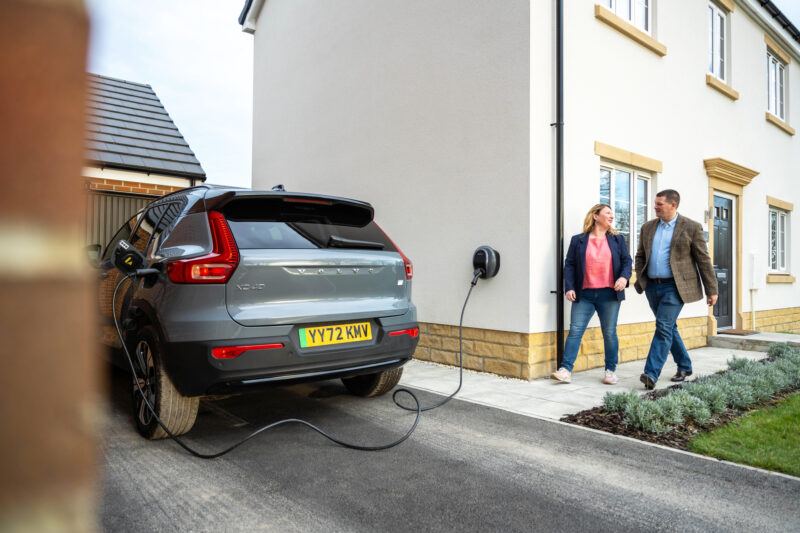Are Electric Cars Safe? Your Concerns Answered
A brief guide assessing the safety of electric vehicles and exploring common concerns.
Last updated: Nov 21, 2024 • 6 min read

Summary
Electric cars are as safe as traditional internal combustion engine (ICE) vehicles. If you follow common advice for drivers, avoid flooded areas and stay inside your car during lightning, you and your electric vehicle (EV) will be safe.
Exploring electric car safety
With over 1 million EVs on the roads of the UK, an increasing number of people wonder if electric cars are safe for drivers, pedestrians, and other road users such as cyclists. We explore general safety concerns, potential dangers to pedestrians and people with health conditions, and how an EV would fare during extreme weather.
General safety concerns
When it comes to general safety concerning electric cars, two issues often come up – EV batteries and crashes. The question is whether they are particularly dangerous, more so than in the case of ICE cars.
Are electric cars dangerous in a crash?
Generally, electric cars are as safe as, if not safer than, ICE cars, but don’t just take our word for it – the Euro-NCAP, an independent safety body testing cars in Europe, confirms this.
As part of its assessment, the Euro-NCAP conducts crash testing. It’s found that some of the safest cars currently available are EVs, including the Tesla Model S and Model Y, and Mercedes EQE. So no, electric cars are no more dangerous than ICE cars in crashes, and in some instances are actually safer.
Are EV batteries dangerous?
Another safety concern surrounding electric cars is that their batteries may be dangerous. While it’s true that lithium-ion batteries, which are the most common type of battery in EVs, can catch fire, manufacturers go to great lengths to protect the battery pack from damage.
In fact, it’s widely accepted that ICE cars are more likely to catch fire than EVs, but you’ll rarely hear about ICE car fires in the press. Stories about electric car fires are featured far more often, although they’re less likely to happen.
Electric cars are fitted with a Battery Management System (BMS) to monitor performance and regulate temperature to avoid fires caused by overheating. In the rare instance of an EV catching fire due to a fault, fire services have developed and adopted better strategies to effectively put out battery fires.
Pedestrian safety and health concerns
Are electric cars dangerous to pedestrians?
Electric cars are significantly quieter than ICE cars, especially at lower speeds. The reduced noise can be dangerous to pedestrians – they may miss an approaching EV or notice it too late. Vulnerable pedestrians, such as visually impaired and other disabled people, children, and the elderly are at an increased risk.
To address this issue, the UK government introduced legislation in 2019 requiring new type quiet electric vehicles to be fitted with an Acoustic Vehicle Alerting System (AVAS). This noisemaker emits a sound at speeds below 20 km/h (around 12 mph) to alert pedestrians and other road users like cyclists.
However, pedestrian safety is about more than making EVs louder. Factors such as driving speed, driver behaviour and safety features all play an important role. Some newer cars, including electric ones, are fitted with emergency braking systems to prevent collisions with pedestrians and other cars.
Are electric cars safe for your health?
Electric cars are great for the environment, which makes them safe for your health and significantly better than petrol or diesel cars.
EVs produce no emissions while driving and contribute to improving the air quality in your immediate area. Short-term and long-term exposure to poor air quality can lead to health issues and may be dangerous for people with pre-existing conditions such as asthma.
What about people with pacemakers?
Concerns have been raised over people fitted with pacemakers and defibrillators using high-powered EV chargers. The worry is that the electromagnetic current from a charger, especially high-powered rapid chargers supplying up to 350kWh, could cause these cardiac devices to malfunction.
However, a 2023 cardiology study found no proof of chargepoints interfering with pacemakers or defibrillators, so using home chargers and fast or rapid chargers is safe for people with these devices.
EV safety in different weather conditions
EVs are built to withstand general weather (so conditions that aren’t out of the ordinary) without compromising their safety. Think warm summer days, light to heavy rain and snow in the winter.
Driving your EV in the rain & icy conditions
While an EV battery and other electrical components won’t be damaged from heavy rain showers, you should still be careful when driving in the rain. Wet conditions can cause aquaplaning and decrease visibility. It’s best to adjust your speed to stay safe on the road.
If it’s icy, you should avoid accelerating, braking or steering too quickly. It could lead to you losing control of your EV.
What about floods or lightning?
Just like ICE cars, EVs can be affected by extreme weather. To stay safe during flooding, you should follow the same advice as ICE drivers: try to avoid high water levels.
The battery pack and other parts of an EV are incredibly well protected from the elements. In the unfortunate event that water reaches electrical components in an EV, it can cause it to short-circuit and break.
EVs are also safe to drive during other extreme weather events like lightning. If you’re in the vehicle when lightning strikes, it acts like a Faraday cage. Any electric current goes through the metal frame, into the tires, and then into the ground, protecting you from harm. So it’s better to stay in your EV during lightning than outside.
That said, it’s advisable to unplug your EV from any charger during lightning storms. A nearby strike can cause an electrical surge, which could damage your electric vehicle’s charging system or the charger itself, although some chargers come with surge protection devices to protect the charger from unexpected surges.

